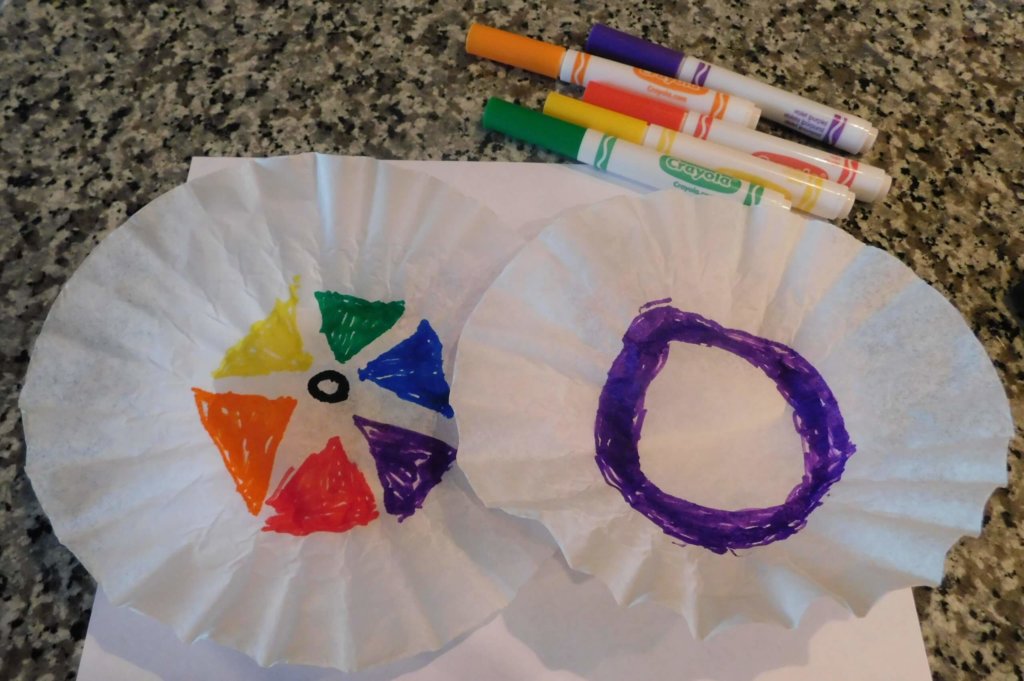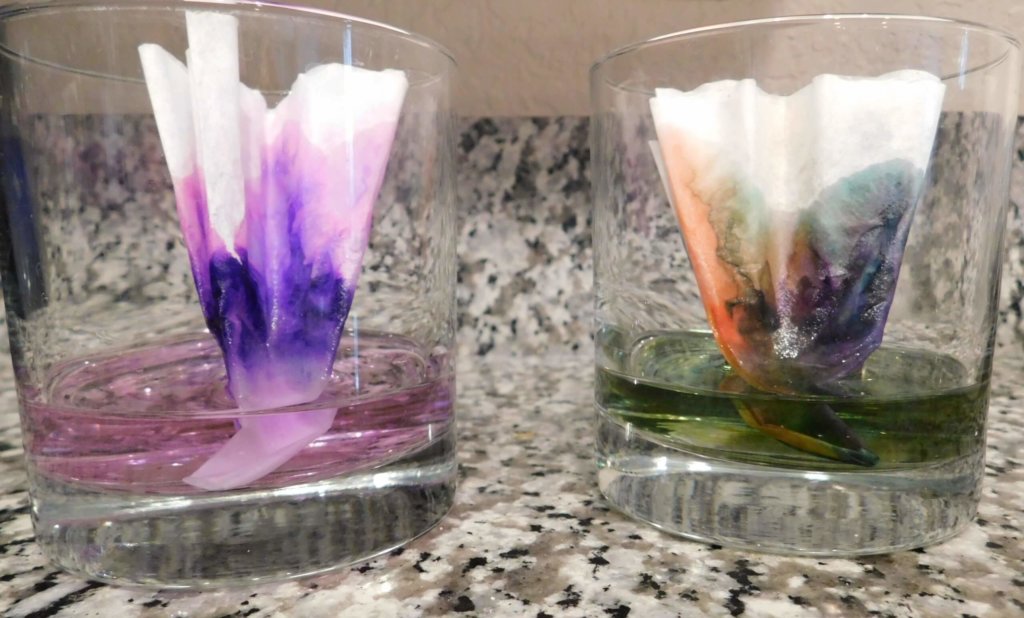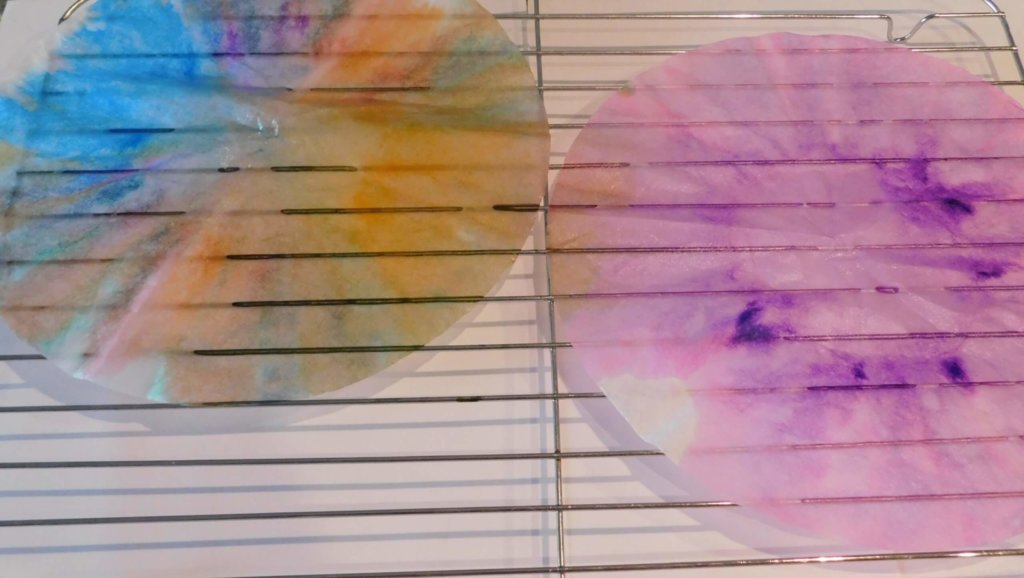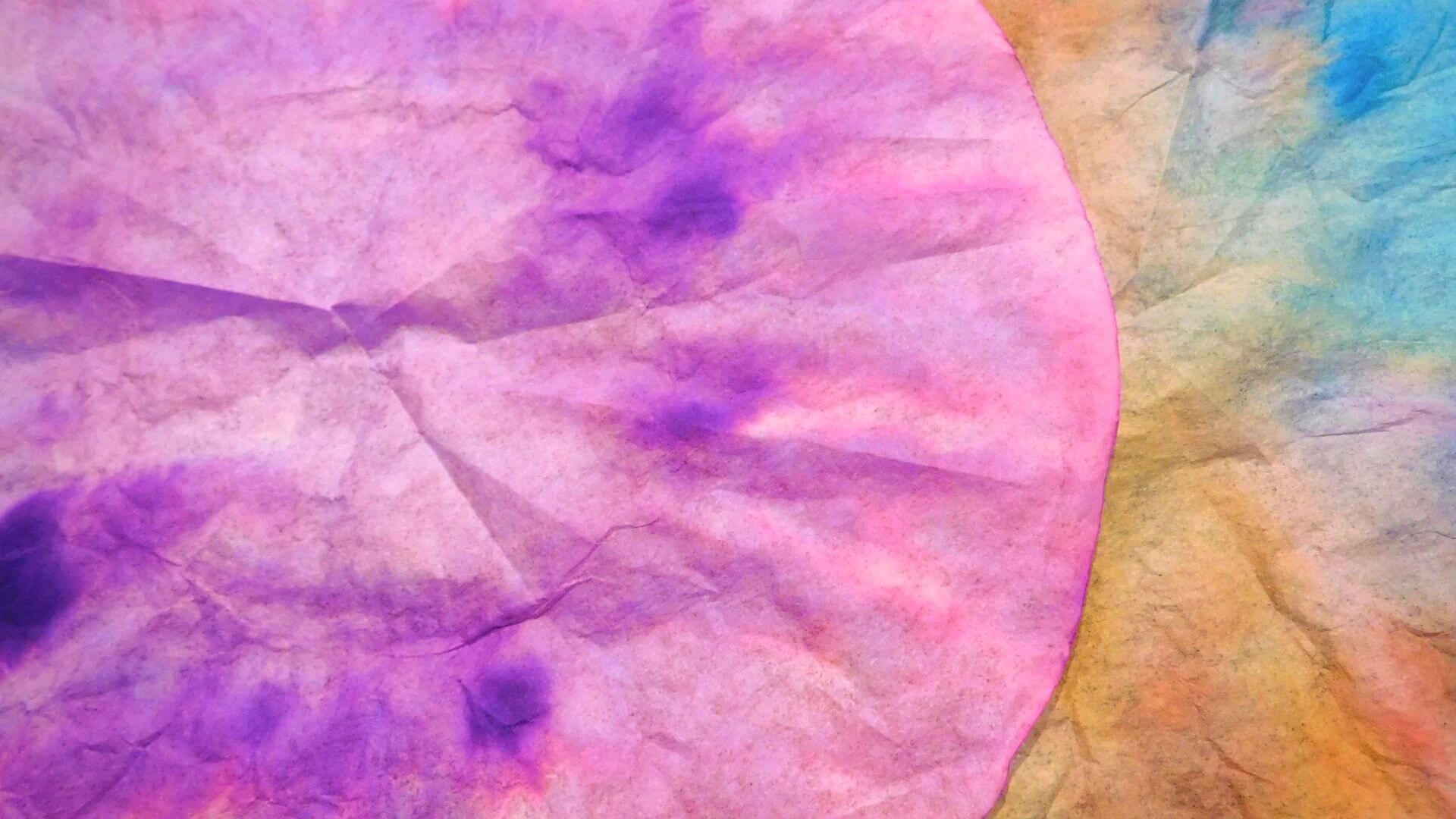See water flow upwards with this colorful coffee filter experiment!
Capillary action is the ability of a liquid to flow in narrow spaces. With capillary action, water can even flow upward against gravity! You can observe capillary action all around you, for example, it's what moves the water up through plant roots and your tears through your tear ducts.
It's hard to visualize but when you use our steps for this colorful coffee filter experiment to add an explosion of color, it will come together! Once your coffee filters have dried, you can use the them for other craft projects!
For more amazing experiments with water, see how you can freeze time through laminar flow.
Materials:
- Coffee filters
- Markers
- Water
- A small clear cup or glass
Directions:
STEP 1
- Use the markers to draw all over the coffee filter.
The more colors you use, the more vibrant your colorful coffee filter experiment will be.
STEP 2
- Fold the coffee filter in half. Then in half one more time.

STEP 3
- Add enough water to the cup to just barely cover the bottom and set your coffee filter in the cup.
This will take a few minutes, so you can use this time to talk about capillary action or ask these questions to expand on the activity:
- How do the colors change as they move up the coffee filter?
- Do you see any colors mix? What new colors do you see?
- Did any colors disappear?
- Why do you think this is happening?

STEP 4
Once the water has reached the top of the coffee filter or has stopped moving, remove your coffee filter from the cup and open it up!
STEP 5
- Let your colorful coffee filter experiment dry and then upcycle it for your next maker project!

Expand on the Activity:
- What happens if you only use one color, like green or black? How does the color of the ink change as it spreads out? Why do you think this happens?
- Once they’ve dried, the coffee filters can be used as colorful tissue paper in craft projects. Try making flowers, snowflakes, monsters, butterflies, or any other creation you can think of!
If you had fun learning about capillary action and snapped some photos, be sure to submit it to our Science Showcase here or tag Orlando Science Center and use #OSCatHome on social media! You might be featured on our channels.
The Science: Capillary Action & Chromatography
- Water molecules are “sticky.”
- Water molecules like to stay close together because of a force called cohesion.
- However, they also are attracted and like to stick to other substances, like glass, cloth, soil, and fibers. This is known as adhesion.
- When there is more adhesion than cohesion (or when the water molecules stick the surrounding surfaces more than each other), capillary action occurs, causing the water molecules to move up or across the surface.
- In your experiment, water uses this process to move along the tiny gaps in the fiber of the coffee filter. It will keep going up the filter until the pull of gravity is too much for it to overcome.
- Where does capillary action occur in the real world?
- Plants suck up water through their roots, and capillary action is what moves the water up through the roots and throughout the plants.
- Your tears undergo capillary action to move through your tear ducts.
- Capillary action is in play in sucking water up a straw.
- As the water moves up the coffee filter, it dissolves the ink from the markers. The dissolved ink travels with the water and spreads out, coloring the coffee filter.
Learn More: Paper Chromatography
- Inks are mixtures of many different-colored molecules. Paper chromatography separates out the molecules, showing all the individual colors.
- How does this work?
- A solvent (a liquid that dissolves a substance) is used is dissolve the ink. The most common solvents in paper chromatography are water and rubbing alcohol.
- Through capillary action, the solvent keeps moving up the paper and carries the different molecules in the ink with it.
- The different-colored molecules are also different sizes. Larger molecules move more slowly and not as far. Smaller molecules move more quickly and farther. The difference in molecule sizes causes the colors to separate.
- Scientists use paper chromatography to separate colored pigments, to monitor reactions, to isolate and purify substances, to analyze food dyes, and to investigate evidence found at crime scenes.
OSC At Home Emails
Get a round up of our latest activities and ideas delivered straight to your inbox so you don't miss a thing!
Support OSC At Home
In these ever-changing times, it is our pleasure to adapt quality Orlando Science Center experiences to engage with everyone while they are safe at home. Please consider supporting our operating fund to ensure we can continue developing resources today and well into the future. Thank you for your generosity and support!

